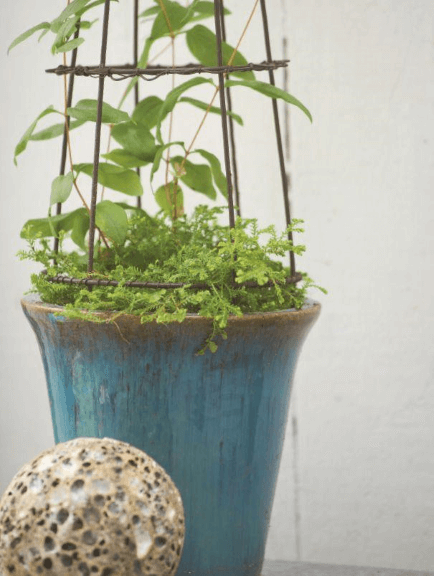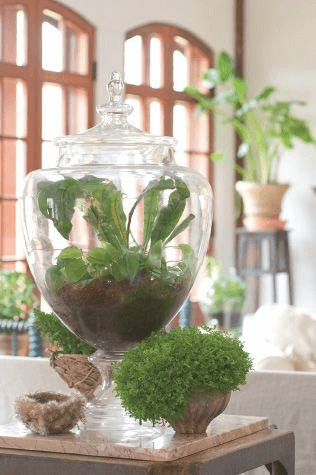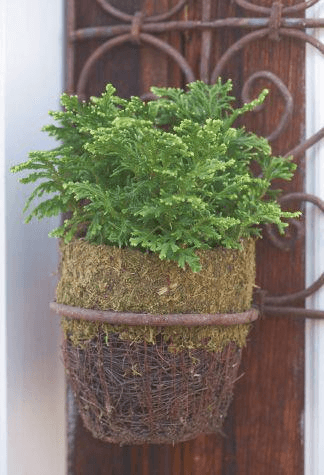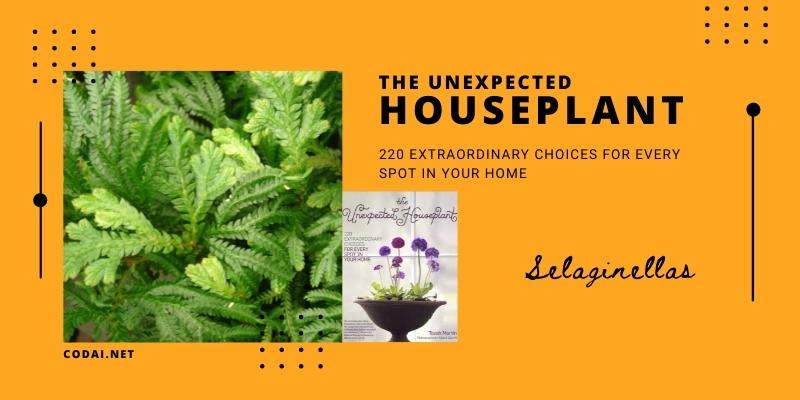[Ebook Việt hóa] The Unexpected Houseplant: 220 Extraordinary Choices for Every Spot in Your Home, Chi Selaginella - Chi Quyển Bá
[Ebook Việt Hoá] The Unexpected Houseplant: Selaginellas (chi Selaginella, chi Quyển Bá)
- Nguồn: [Ebook] The Unexpected Houseplant: 220 Extraordinary Choices for Every Spot in Your Home –
- Biên tập: Dũng Cá Xinh (Tháng 02/2022)
- Dịch: Vui Nguyễn
English
SELAGINELLAS
I’VE NEVER BEEN a big fan of bare soil. I decided long ago that a little green around the ankles wouldn’t be a bad thing for potted plants. An uplifting frill at the base might liven things up in a cheerful sort of way. Fortunately, I found just the plant to do the job.
The way windowsills work, at least in my house, is that sunbeams don’t always hit the container rim, especially in winter. The foliage basks in the beams, but the lumens never penetrate down to soil level. Instead, they are obstructed by window ledges or bogarted by other plants standing in the way. I needed a plant that wouldn’t pout despite low light levels. Fortunately, Selaginellas dote on indirect light. Meanwhile, my collection overflows with plenty of individuals who could use a little action around the base. Take plants with woody stems, for example. Why leave that real estate naked? Blanket it, I say. So I put a team together between Selaginellas and just about everything from Hippeastrum to Fuchsias.

If ever there was a plant qualified for a career as a groundcover, it is the Selaginella species. Spongy, fluffy, almost sea foamy, and with strong survival instincts (against all odds), the beauty of Selaginella kraussiana is its indomitable spirit. Depending on the garden center you frequent, you will find this plant under a vast array of confusing common names, but almost all mention moss. Whether it is spike moss, club moss, mat moss, or Irish moss is governed by the day of the week and the mood of your merchant. Deservingly popular, S. kraussiana does more than merely survive under adverse conditions—it expands. If you treat it halfway decently, it grows by leaps and bounds until it requires dividing or cutting back (I usually just give my mosses a haircut with a pair of barber’s shears). I prefer S. kraussiana ‘Aurea’ for its golden hue. Certainly not blaring yellow, it is sufficiently flaxen to provide a striking contrast with whatever plant is growing above. You can work some nice dialogues back and forth, color-wise.

Other spins on Selaginella kraussiana are all more or less easy to grow. During the holiday season, you will find Selaginella kraussiana ‘Variegata’ tempting you at every turn. Go for it. With more upright growth than the typical spike moss and silver accents on the edges, it has been dubbed “Frosty Fern” for commercial purposes. I find that it does not divide quite as successfully as the old staple Selaginella kraussiana, but it is a close second and nearly as ironclad. You can occasionally find Selaginella kraussiana ‘Brownii’, a slight variation on the theme with more compact, tuft-like growth that makes little foamy whorls, like a Romanesco cauliflower. It is slower growing, but worth the patience required.
Another option is peacock moss, Selaginella uncinata. We’re talking wandering, bluish purple strings of foliage that trail along haphazardly and cover ground rapidly. Just as shade tolerant as plain old Selaginella kraussiana, it shimmers with an iridescent sheen when a sunbeam happens to graze the foliage. I just snip the brownish older wisps to encourage fresh, colorful growth.
Not all selaginellas are equally simpatico with the average home. Unless you happen to dwell in a sauna, many require too much humidity for most of us to easily host. Alas, Selaginella umbrosa is just a wish and hope for most gardeners. With snappy reddish burgundy branchlets, it is petite, compact, and striking. It is common on the market, but mission impossible for me. Heaven knows, I’ve tried.

- ALSO CALLED: Club moss, Irish moss, mat moss, peacock moss, spike moss
| FLOWERS | Not in the cards |
| FOLIAGE | Mossy, fluffy, and sometimes colorful |
| OTHER ATTRIBUTES |
Makes a great groundcover for the container of taller plants |
| SIZE | 2–4 inches (5–10cm) in height |
| EXPOSURE | East or west |
| WATER REQUIREMENTS |
Generous, prefers not to dry out |
| OPTIMUM NIGHTTIME TEMPERATURE |
55–65°F (12–18°C) |
| RATE OF GROWTH | Fast |
| SOIL TYPE | Rich, humusy potting soil |
| FERTILIZING | Early spring to late autumn |
| PROBLEMS | Will scorch in bright light |
Tiếng Việt
CÂY QUYỂN BÁ (SELAGINELLA)
Tôi chưa bao giờ là fan cuồng của đất trống. Từ lâu, tôi đã quyết định rằng tôi phải bao phủ đất trống trong chậu bằng màu xanh. Một lớp cây bao phủ mặt chậu sẽ làm mọi thứ trở nên vui tươi hơn. May mắn thay, tôi đã tìm thấy một loại cây có thể đảm nhận công việc đó.
Ánh nắng không phải lúc nào cũng chiếu đến các chậu cây trên bệ cửa sổ, ít nhất là trong nhà tôi, đặc biệt là vào mùa đông. Các tán lá chìm trong ánh nắng, nhưng ánh nắng lại không bao giờ xuyên xuống đất được. Thay vào đó, chúng bị cản trở bởi gờ cửa sổ hoặc bị che khuất bởi những cái cây to lớn khác. Tôi cần một loại cây sống được dưới ánh sáng có cường độ thấp. May mắn thay, cây Quyển bá lại thích ánh sáng gián tiếp. Trong khi đó, bộ sưu tập cây trồng của tôi có rất nhiều loại có thể sống chung với các loại cây bề mặt khác. Ví dụ như những cây có thân gỗ. Tại sao lại để đất trần trụi như vậy? Thế là tôi đã “đắp chăn” cho nó. Tôi đã tạo nên những chậu cây kết hợp giữa cây Quyển bạ và mọi thứ từ Lan huệ đến hoa Lồng đèn (Fuchsia).

Nếu đã từng có một loài thực vật đủ tiêu chuẩn làm lớp phủ bề mặt, thì đó là loài cây Quyển bạ. Với đặc tính bông xốp, mịn, gần như bọt biển và có bản năng sinh tồn mạnh mẽ thì vẻ đẹp của Selaginella kraussiana chính là tinh thần bất khuất của nó. Nếu hay lui tới trung tâm cây giống, bạn sẽ thấy loài thực vật này dưới vô số cái tên vừa phổ biến vừa khó hiểu, nhưng hầu như tất cả đều đề cập đến rêu. Cho dù đó là rêu gai, rêu than bùn, hay rêu Ailen chúng sẽ được gọi với những cái tên khác nhau trong các ngày khác nhau trong tuần và phụ thuộc vào tâm trạng của người bán. Quyển bạ Kraussiana vô cùng nổi tiếng, nó không chỉ đơn thuần sống trong điều kiện bất lợi mà nó còn có thể phát triển rộng. Nếu bạn xử lý nó nửa chừng, nó sẽ phát triển nhảy vọt cho đến khi nó cần phân chia hoặc cắt tỉa (tôi thường chỉ cắt tỉa rêu bằng một cặp kéo cắt tóc). Tôi thích Quyển bạ Kraussiana ‘Aurea’ vì màu vàng kim của nó. Chắc chắn đó không phải là màu vàng chói, nó là màu hoe hoe vàng tương phản với bất kỳ loại cây nào đang phát triển ở trên.

Một lựa chọn khác là rêu Peacock, hay có tên khoa học là Selaginella uncinata (Quyển bá móc). Đây là loại cây với những chuỗi tán lá màu tím hơi xanh, chạy dọc theo thân cây một cách ngẫu hứng và che phủ mặt đất nhanh chóng. Nó cũng chịu được bóng râm như Selaginella kraussiana cổ thụ đơn thuần, nó lấp lánh ánh kim khi ánh nắng chiếu vào sượt qua những tán lá. Tôi chỉ cắt tỉa những ngọn cây già màu nâu để nó trông tươi tắn, đầy màu sắc.
Không phải tất cả các loại cây Quyển bạ đều dễ trồng như nhau. Nhiều cây cần độ ẩm cao để dễ dàng phát triển. Chao ôi, Selaginella umbrosa là mong ước và hy vọng của hầu hết những người làm vườn. Chúng có những nhánh con màu đỏ tía, mảnh dẻ, nhỏ nhắn, và nổi bật. Đây là loại cây phổ biến trên thị trường, nhưng nó lại bất khả thi đối với tôi. Có trời mới biết, tôi đã thử rồi.

- CÒN ĐƯỢC GỌI LÀ: Rêu Ailen, rêu gai, Quyển bạ móc, rêu than bùn.
| HOA | không mấy khi nở hoa |
| LÁ | phủ rêu, có lông tơ, đôi khi có nhiều màu sắc |
| THUỘC TÍNH KHÁC | tạo lớp phủ bề mặt tuyệt vời cho các chậu cây cao |
| KÍCH THƯỚC | cao 2–4 inch (5–10cm) |
| ÁNH SÁNG | phía Đông hoặc Tây |
| YÊU CẦU VỀ NƯỚC | nhiều nước, không ưa khô |
| NHIỆT ĐỘ TỐI ƯU BAN ĐÊM | 50–65 ° F (10–18 ° C) |
| TỐC ĐỘ PHÁT TRIỂN | nhanh |
| LOẠI ĐẤT | đất bầu giàu mùn |
| BÓN PHÂN | từ đầu mùa xuân đến cuối mùa thu |
| VẤN ĐỀ | dễ bị cháy nắng khi ánh sáng mạnh |




